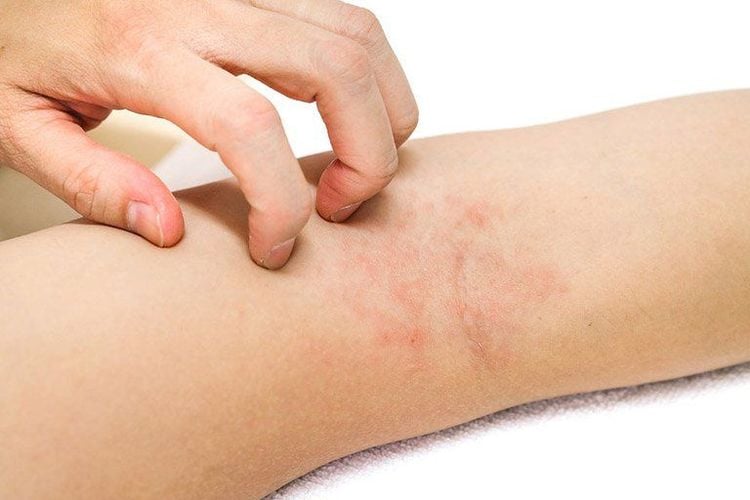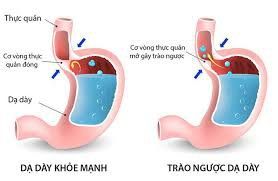This is an automatically translated article.
Sarcoidosis has no cure, however, most people live comfortably with moderate treatments, as sarcoidosis can resolve on its own. In rare cases, symptoms can persist for a long time and lead to organ damage.
1. What is Sarcoidosis?
Sarcoidosis, also known as granulomatous disease, is a condition in which the excessive growth of inflammatory cells in different parts of the human body causes the organs to become inflamed, The most commonly affected organs are the lungs, lymph nodes, eyes, and skin.
As a common form of granuloma, it can also be considered a benign tumor. However, these granulomas can only be seen with a microscope. Regarding the cause of the disease, experts believe that the disease comes from the body's immune system reacting to a foreign substance, such as a foreign object from the air.
2. Symptoms of Sarcoidosis
About the signs and symptoms of Sarcoidosis are often variable and depend on which organs are affected. In some cases, the disease progresses slowly, causing symptoms that last for years, or the symptoms of the disease to appear suddenly and then disappear quickly. However, many patients have no special symptoms and are only discovered incidentally when taking X-rays.
For many people, the general symptoms of sarcoidosis include fatigue, fever, swollen lymph nodes, and weight loss. Other symptoms will depend on where the organ is infected. Specifically:
Symptoms of Sarcoidosis in the Lungs Almost everyone with Sarcoidosis will have symptoms in the lungs. Those symptoms may include: Persistent dry cough, shortness of breath, wheezing, and chest pain.
Symptoms of Skin Sarcoidosis About 25% of people with sarcoidosis will develop skin symptoms. These symptoms may include: Rash, which can be red or purple-red, usually on the legs or ankles, and feels warm and tender to the touch. The disease also causes skin lesions such as disfiguring sores (this symptom usually appears on the nose, cheeks and ears)
Besides, sarcoidosis can cause the skin to change color (the skin may darken). colored or lighter) and nodules under the skin, especially around scars or tattoos.
Symptoms of Sarcoidosis in the Eye Sarcoidosis can also damage the eye organs, but the symptoms in the eyes are not obvious to the outside, so when the patient feels blurred vision, eye pain, If your eyes are red and sensitive to light, you need to go to a medical facility for an eye exam.

Hầu như những người mắc bệnh Sarcoidosis đều sẽ có các triệu chứng tại phổi
3. Complications of Sarcoidosis
Usually, in most people with sarcoidosis, the condition goes away on its own and it leaves no serious consequences for the patient. However, in the case of people with prolonged sarcoidosis (which becomes chronic) it causes a number of complications and can affect different organs of the body. Complications of sarcoidosis are:
Pulmonary complications: In cases where sarcoidosis has symptoms in the lungs but is not treated promptly, it can lead to irreversible damage to the interstitial tissue (this is the interstitial space between the air sacs in the lungs), thereby making the patient often have difficulty breathing. Eye complications: Inflammatory conditions can affect components of the eye, more dangerously leading to blindness for the patient. Although a rare complication, sarcoidosis can also cause cataracts and glaucoma. Kidney complications: The cause of kidney complications is sarcoidosis, which affects the body's calcium metabolism. Cardiac complications: If granulomas are deposited in the heart, they can affect the electrical activity of the heart. This electrical activity of the heart has a role in regulating the heart rhythm, if the electrical activity of the heart is affected, it causes abnormal heart rhythms, in rare cases, this complication can be fatal. . Nervous system complications: If granulomas form in the brain and spinal cord, people with sarcoidosis will have central nervous system symptoms. If complications of facial neuritis, it can lead to facial paralysis.
4. Tests and Diagnosis of Sarcoidosis
Sarcoidosis can be difficult to diagnose, the cause is difficult to diagnose because the disease causes few signs and symptoms in the beginning, so the patient is often subjective and ignored. In addition, the symptoms that occur will vary because depending on the organ systems affected, it can be confused with other disorders.
Therefore, the following diagnostic tests are often ordered to help guide the diagnosis and differentiate it from other disorders:
Chest radiograph: Simple chest radiography can show enlarged lymph nodes in the chest or lung damage. Some people have been diagnosed with sarcoidosis before symptoms appear thanks to a chest X-ray. Computed tomography (CT) scan: Computerized tomography is a technique that uses a computer to combine a large number of X-rays taken from many different directions into detailed, horizontal images of the patient. structures inside the body, whereby granulomas can be seen on CT scans. Blood test: This is a test to check the general health as well as examine the function of organs in the body such as liver and kidneys. Pulmonary Function Measurement: These tests are typically measured to measure lung mass, inhaled and exhaled air volumes, inspiratory and exhalation times, and how well the lungs are supplying oxygen to the lungs. blood. Biopsy: A biopsy is a procedure in which a small sample of tissue is taken from the part of the body affected by sarcoidosis. The biopsy may be taken from the skin, right subcutaneous lymph nodes, or the outer membranes of the eye, or it may be taken from the bronchoscope to obtain a small sample of lung tissue. The biopsy sample will then be sent to a microbiology laboratory to look for the specific organism that causes the disease.

Bệnh Sarcoidosis có thể khó chẩn đoán
5. Treatments for sarcoidosis
Sarcoidosis may not require treatment if there are no signs and symptoms present or if symptoms are present but are not bothersome to the person. However, the disease can improve on its own in many cases, but close monitoring is necessary, often through chest X-ray, eye, skin and other relevant organs examination.
Treatment is needed if it affects the functions of vital organs in the body. The treatment methods are as follows:
Medication use The drugs commonly used to treat sarcoidosis are Corticosteroids, Prednisone and other corticosteroids. In other cases, these drugs have strong anti-inflammatory effects when used topically or aerosolized into the lungs. Anti-rejection drugs such as methotrexate (Trexall) or azathioprine (Imuran) work to reduce inflammation by suppressing the immune system, so they can be used to treat the disease. However, these drugs often carry risks such as susceptibility to infections, so they should be used with caution.
In some cases, antimalarial drugs such as Hydroxychloroquine (Plaquenil) can also be used, because the drug can be used for skin diseases, increasing blood calcium and acting on the nervous system. However, when using antimalarials, it is necessary to have regular eye exams because it can be harmful to the eyes.
Surgery In cases where sarcoidosis has severely damaged the lungs or liver, organ transplant surgery may be considered.
To ensure safety, patients need to go to a reputable hospital to conduct examination and treatment as soon as there are signs of sarcoidosis. Currently, Vinmec International General Hospital is one of the leading prestigious hospitals in the country, trusted by a large number of patients for medical examination and treatment. Not only the physical system, modern equipment: 6 ultrasound rooms, 4 DR X-ray rooms (1 full-axis machine, 1 light machine, 1 general machine and 1 mammography machine) , 2 DR portable X-ray machines, 2 multi-row CT scanner rooms (1 128 rows and 1 16 arrays), 2 Magnetic resonance imaging rooms (1 3 Tesla and 1 1.5 Tesla), 1 room for 2 levels of interventional angiography and 1 room to measure bone mineral density.... Vinmec is also the place to gather a team of experienced doctors and nurses who will greatly assist in diagnosis and detection. early signs of abnormality in the patient's body. In particular, with a space designed according to 5-star hotel standards, Vinmec ensures to bring the patient the most comfort, friendliness and peace of mind.
Please dial HOTLINE for more information or register for an appointment HERE. Download MyVinmec app to make appointments faster and to manage your bookings easily.













